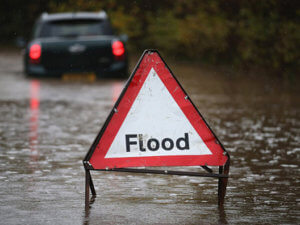
Flood Risk Assessment (FRA)
You will need to provide a Flood Risk Assessment (FRA) to your local authority as part of the planning application for development within Flood Zone 2 or 3a but also with Flood Zone 1 within a critical drainage area. You can find out which Flood Zone your development is in via the Environment Agency website here.
You will need a Flood Risk Assessment in the following scenarios:
- In Flood Zones 2 or 3a including minor development and change of use.
- In Flood Zone 1 with a development site greater than 1 hectare.
- In Flood Zone 1 with a development site less than 1 hectare, including a change of use in development type to a more vulnerable class (for example from commercial to residential), where they could be affected by sources of flooding other than rivers and the sea (for example surface water drains, reservoirs).
- In Flood Zone 1 which has critical drainage problems as notified by the Environment Agency.
You are recommended to contact a suitably qualified professional to carry out a Flood Risk Assessment for your site. These can be easily found in your area and generally cost a few hundred pounds depending upon the complexity required.
Sequential and Exception Tests
A developer may need to submit sequential and exception tests if developing in Flood Zones 2, 3a or 3b. Essentially a Sequential Test is designed to demonstrate that other options to develop do not exist in areas which are not susceptible to flooding. The Exception Test provides a method of managing flood risk while still allowing necessary development to occur. The Exception Test is only appropriate for use when there are large areas in Flood Zones 2 and 3, “where the Sequential Test alone cannot deliver acceptable sites, but where some continuing development is necessary for wider sustainable development reasons, taking into account the need to avoid social or economic blight”.
What to include in a Flood Risk Assessment
- Your site address.
- A description of your development.
- An assessment of the flood risk from all sources of flooding for your development, plus an allowance for climate change.
- The estimated flood level for your development.
- Details of your flood resistance and resilience plans.
- Plans and drawings showing the development.
- Management of surface water and evacuation procedures, if applicable.
- Emergency escape plans for any parts of a building that are below the estimated flood level.
- Average ground level of your building.
- Finished floor level of the lowest habitable room which should be 300mm above the general ground level of the site or 600mm above the flood level, whichever is higher.
- Extra flood resistance and resilience measures, as applicable.
- Sequential and Exception Tests, as required.
If in any doubt, contact a professional to compile the Flood Risk Assessment on your behalf.
Page Updated: 21st November 2020